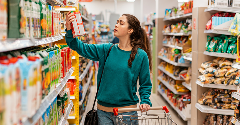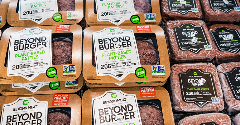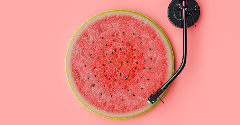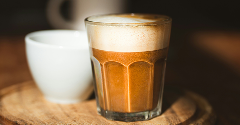News
How does honey compare to sugar?
27 Jun 2018Sugar use is down and honey use is up as manufacturers look for natural sweetening alternatives – but does honey live up to the hype?

According to the European Commission, consumption of high sugar foods and drinks is contracting in Europe, down 1-2% across the EU over the past five years. It predicts a further decline of about 5.4% to 2030 as manufacturers cut sugar in their products in response to health concerns, and as consumers aim to reduce their own sugar consumption.
Meanwhile, many consumers see honey as a natural, healthier alternative to ordinary sugar. About 25% of the honey consumed in Europe is used as an ingredient in packaged foods and drinks, and although honey is not an innovative ingredient in itself, companies increasingly are innovating with honey in products like salty-sweet or spicy-sweet snacks, ready-to-drink teas and breakfast cereals. According to Eurostat figures, Germans consume more honey than any other European nation, at 23% of the total, while other big consumers include the UK, France, Spain and Poland. While honey consumption is strong across the continent, it is growing particularly rapidly in Ireland and many Eastern European countries, including Croatia, Latvia, Romania and Estonia.
Both sugar and honey qualify as added sugars in foods and drinks, and both can contribute to obesity and dental caries. However, honey is often touted as a source of trace minerals and – with its lower glycaemic index – as a potentially better choice for those with diabetes or pre-diabetes. Although the energy in honey may be released a little more slowly than the energy in sugar, it needs to be treated with the same caution as other sugars, according to specialist advice from organisations including Diabetes UK and Diabetes Ireland.
Like sucrose (ordinary sugar), honey is composed of glucose and fructose. These sugars in sucrose are bound together, but they exist as free sugars in honey, making it taste sweeter. This means some consumers may use less of it, perhaps negating honey’s slightly higher calorie content.
However, the honey varieties that spike blood glucose more slowly tend to be higher in fructose, and that in turn is unlikely to be beneficial, whether or not someone has diabetes. While glucose can be used by nearly every cell in the body for energy, fructose is broken down only in the liver, and emerging evidence suggests it may be more easily converted to fat.
As for the trace minerals and antioxidants in honey, the values are so low that honey cannot be considered a source of nutrients. There is about 11 mg of potassium in a tablespoon of honey, for example, while recommended daily consumption is 3,500 mg.
Even though honey is far from a nutritional powerhouse, it still has benefits for manufacturers.
From a functional perspective, honey can be used instead of sugar in many baked items such as bread and cereals where it contributes similar attributes like colour, extended shelf life, structure development and browning, and its stickiness can be useful for binding snack bars. Its distinctive flavour can be a challenge in some products – but it can also be played up as a desirable characteristic. Aside from real honey, honey flavours can also be used to add the health halo of honey to foods and drinks. Doehler, for example, recommends its honey extracts and flavours to add the “fine taste notes of honey” to enhance fruity and spicy products.
Food manufacturers using honey must also take care that their supply is genuine, as honey is one of the top targets for food fraud, according to a 2016 EU report. It found that about 20% of honey sold in the EU was suspected to contain foreign sugars, either in the form of sugar syrup or cheaper multifloral honey being sold as single source honey. Companies such as Eurofins and Campden BRI provide authenticity testing services that can ensure honey is genuine.
The bottom line is that honey and sugar are very similar from a nutritional perspective, but consumers’ perception of honey as a natural alternative to sugar is generally positive. What’s more, honey can bring interesting flavours and textures to a wide range of products.
Related news

Retail landscape lacks nutritious and affordable food, says ATNi
30 Dec 2025
A rapid increase in modern food retail has given retailers growing influence over consumer diets, according to global non-profit ATNi’s latest assessment.
Read more
Debate over ban on ‘meaty’ names for plant-based products reaches stalemate
26 Dec 2025
The debate over a ban on plant-based products using “meaty” terms has reached a stalemate, leaving manufacturers in limbo and still facing overhauls to their marketing and packaging.
Read more
Multi-sensory food and drink products to gain traction in 2026
16 Dec 2025
Trend forecasters predict that sensory elements will play a larger role, helping food and beverage brands differentiate themselves in a competitive market in 2026.
Read more
Big appetite for M&A between European and US food and drink companies
3 Dec 2025
Persistent tariffs on EU food and beverage exports have helped drive record levels of M&A activity between European and US companies this year, according to analysis by ING.
Read more
Non-UPF Program extends certification scheme to entire food industry
30 Nov 2025
The Non-UPF Program has extended its certification scheme to the wider food sector, championing a move towards healthier consumption habits.
Read more
Lancet study links UPFs to chronic disease risk
26 Nov 2025
UPFs are consistently associated with an increased risk of diet-related chronic diseases, according to a comprehensive review of global evidence in The Lancet .
Read more
Concerns swirl around cinnamon’s compliance with EU law
25 Nov 2025
Cinnamon may be a top functional ingredient, but it needs stronger protocols to ensure it meets EU food safety laws and quality standards, say researchers.
Read more
Oat Barista: Innovation for game-changing beverages
20 Nov 2025
Oat Barista is a clean label, sustainable, and innovative drink base specifically designed to create the perfect foam in one single ingredient.
Read more
How younger consumers are redefining ingredient choices and rejecting brand loyalty
18 Nov 2025
Gen Z and millennial consumers’ preferences for transparency, functionality, and purpose are “redefining the very nature of consumption itself”, says SPINS.
Read more
Hybrid formats and flexible positioning to disrupt category norms in 2026
17 Nov 2025
Trend forecasters expect food and drink to move more fluidly across occasions, functions, and formats as consumers seek versatility, novelty, and convenience.
Read more